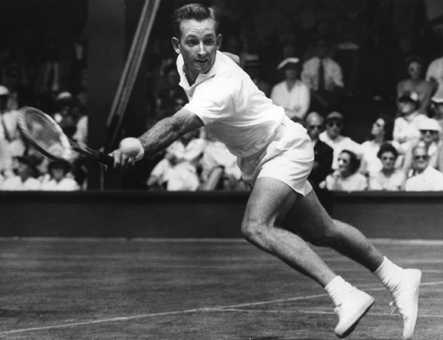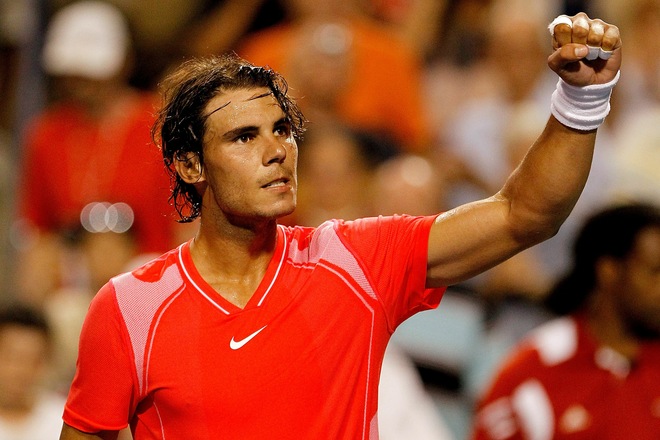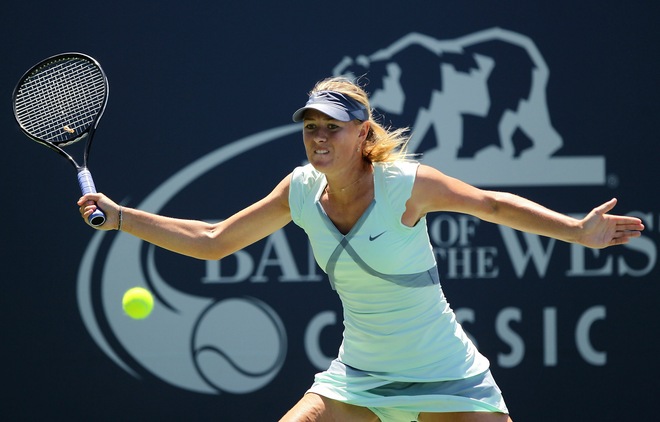Many eyes remain on Roger Federer as the 16-time major tournament winner turned 29 years old on August 8, 2010 with an ATP World Tour ranking for No. 3 – his lowest ranking since 2003. Will the Swiss maestro change his game, his strategy and this style of play in the latter years of his career to continue to win major singles titles well into his thirties?
Rod Laver, the only player in the history of tennis to win the Grand Slam of tennis twice, won his second Grand Slam in 1969 at the age of 31. In his newly re-released and updated memoir THE EDUCATION OF A TENNIS PLAYER ($19.95, New Chapter Press, www.NewChapterMedia.com), Laver discusses “changing your game as your grow older” in this exclusive book excerpt below.
In 1963 at Adelaide, when the American team of Chuck McKinley and Denny Ralston took the Davis Cup away from Australia, the pivotal victory was the doubles match.
The Yanks beat Neale Fraser and Roy Emerson largely because Fraser couldn’t hit his overheads. McKinley and Ralston obliged by feeding him lobs whenever they could, and Fraser’s failure caused an astute observer, Jack Kramer, to say: “The first thing that goes in an aging tennis player is not his legs—but his overhead.”

Now Fraser was by no means an antique. He was thirty, but he hadn’t been playing quite as much as the others. It was a good lesson to remember. The overhead is the most tiring stroke to hit, and if you can make older opponents hit a lot of them, you’re going to cause a breakdown. (Unless the older opponent you have in mind is Pancho Gonzalez—although Pancho could be wearied a bit by good lobs, too.)
Pancho, by the way, was a good example of a prudent change by a man over forty. He used a much lighter racket than he did years ago, barely 13 ounces. Red Hoehn, former teaching pro at the Badminton & Tennis Club in Boston who did stringing for Pancho, was jolted back in the day when he weighed Pancho’s rackets. “This is the same weight my twelve-year-old daughter uses,” said Hoehn.
The lighter racket is easier to whip around, causing less strain. Pancho became a devotee of the metal racket. Again, it can be swished easily, offering less resistance with the split shaft. Serving with the metal rackets is not as tiring.
On the serve, it’s doubly important for the older player to get the first ball in, for this is a fatiguing stroke, too, and you want to hit as few serves as possible. Elderly players — there are people in their nineties who continue to play — might consider using VASSS (Van Alen Streamlined Scoring System) rules, in either single-point or no-ad form. Single-point is similar to table tennis scoring, with the serve changing every five points. No-ad eliminates deuce; thus the first to reach four points wins the game. Both reduce the strain of serving long deuce games or sets. Jimmy Van Alen, the audacious enemy of conventional scoring, also conceived the sudden death tie-breaker, a revolutionary newcomer at Forest Hills in 1970. This outlaws deuce sets, going into force at 6-6 in games. Sudden death is a best-of-nine sequence of points ending the set. The professional tours have adopted no-ad for doubles, and a tie-breaker in place of a decisive third set. Jimmy would be delighted. Complete rules of VASSS are available on request from the International Tennis Hall of Fame, Newport, Rhode Island.
Older players may be surprised at finding themselves better in many ways than as youths, having learned not to blast away all the time with the gusto of bygone days, and to must play more thoughtfully, mixing up strokes. Hitting the ball on the rise takes advantage of the pace the opponent puts on the ball and uses less energy. Don’t run for a ball obviously out of reach, or on a point that probably doesn’t mean much, say at 40-0 or 0-40.
Gonzalez was a good example, mustering his energy, saving the big serve for when he really needed it. He kept his returns low and soft, and used the lob often and well. When he came to the net he made sure it was behind a worthwhile shot. He felt that his eyes and reflexes had gone just a little and had trouble with balls hit directly at him at net. This is always a good tactic to use with a volleyer—bang it right at him—and it pays off more against an older opponent.
Older players are more likely to pull muscles, so they should be sure to be warmed up properly, and should take it easy if they haven’t been playing regularly. It’s a great game at any age. So take it easy and enjoy it.


